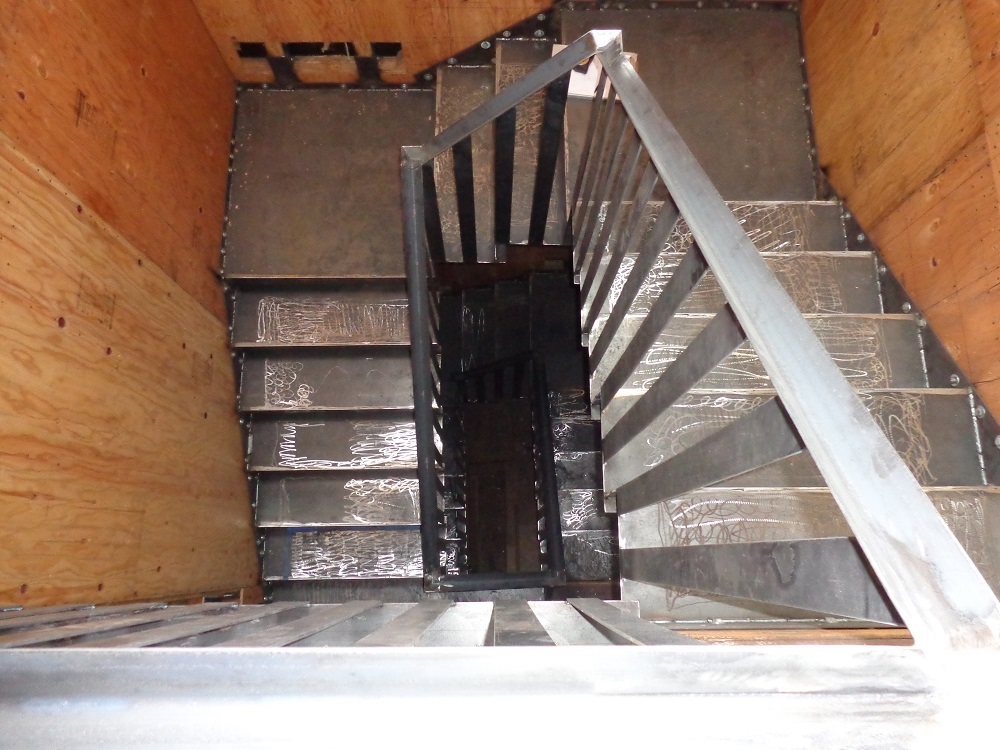Making Curved Baseboard Cap Moulding
Popular vote winner: rip it into thin strips and re-laminate it on the curve you want. June 26, 2009
Question
Any suggestions on how to bend a typical base cap moulding? We are bending this trim around a curved reception wall, smallest radius is 2'. We have kerfed the back but the moulding won't bend in a straight line, wants to bend down because of the angle of the kerf. Species is mahogany.
Forum Responses
(Architectural Woodworking Forum)
From contributor R:
Are you milling this molding in your shop for the job, or do you have access to the knife? Your best bet would be to laminate some mahogany in the radius you need and cut the profile. Base cap is so thin it will probably blow apart if you try to kerf it. If you can't mill the stock, you might consider getting several pieces and sawing it with a very thin band saw blade and re-gluing it to the radius. (Royal pain in the butt, but can be done as a last resort.)
From the original questioner:
That was our next step, but we were hoping to avoid it if possible.
From contributor N:
I have had good luck soaking different molding in water and letting the molding dry on a board with pegs that hold the wood in the same radius you need. Without seeing the exact molding, it's tough to give a recommendation.
From contributor M:
Another option is to start with two pieces close in color and rip strip it. Rip the first one, removing exactly the width of the blade, move your saw fence that same kerf dimension and rip the next one, and so on and so on. Build it up with glue and pin nailing around a form or on the actual piece and then sand. I produced a lot of trim this way on the jobsite using an old Makita table saw.
From contributor N:
I have done that for a radiused 4" wide trim above a large arched picture window and it does work great!
From contributor C:
Right on, contributor M - I typically get three times as much as I need for the curved sections. Then rip as thin as needed for the radius. Re-glue carefully, sand and stain. Small molding curves are expensive. Large wide curves are easier and yet yield a lot more revenue.
From the original questioner:
Thanks for all the suggestions. We're gonna try contributor M's idea with the strips since there's not that much footage of trim and I can attach to the actual wall here in the shop. (We're in before the tile guy, so I have a little play.)
From Gary Katz, forum technical advisor:
We've used the same technique, down to about a 2 ft. radius. Anything smaller and it starts getting pretty silly how thin the rips have to be.
From contributor N:
So anything smaller, just sub out to a specialty company?
From Gary Katz, forum technical advisor:
Absolutely... and really, unless you have a lot of time on your hands and nothing else productive to do, well, if I were you, I'd ask the specialty company to give you a price. You'd be surprised at how affordable custom moldings are. If there's no knife charge (and for typical common stuff, there usually isn't), it's really not that expensive. I'd check it out, just so you know the whole picture. Sometimes we don't have time, and we do silly stuff on the job - like miter thirty 1/2" pieces of crown to turn a tight radius - but it's always kind of silly.
From the original questioner:
I did use a sub in Chicago one time and the knife charge was only 150.00. Three years later they had damage and the next round no knife charge - they keep them forever. Many of my floor inlays go in round and oval rooms.
From contributor J:
This morning I had to bend a base cap and base to about a 24" radius. I tried to find rubber moulding but found there were too many hoops to jump through, so I tried rip stripping. It worked pretty good. I found fir works better than SYP. I also found random grained works better than straight grain. The straight grained pieces wanted to split along the growth ring.
I don't see how you could get close enough for stain grade work, though, as I needed some spackle and thick primer to make it look perfect.
Oh yeah, I found Azek works great for easy curves and it's harder and smoother than wacky wood, which is softer than balsa.
From contributor R:
One point I forgot to mention in my prior post... Again, this is dependent on you having the knife to cut it. Try to get your hands on some of the species you are working with in green (not kiln dried) form and just steam bend it. Can't do it with kiln dried, as the wood cells will not compress as they lose their elasticity in the drying process. Just another alternative suggestion for when this comes up in the future.
From the original questioner:
We used contributor M's idea with the strips and it turned out great. It was mahogany with a Cordovan stain, and you can't even see the strips. It was time consuming, though. Clamped it to the wall as a form as we glued it up, so there was no accommodation for spring back. In summary, it works well but takes a lot of time.
